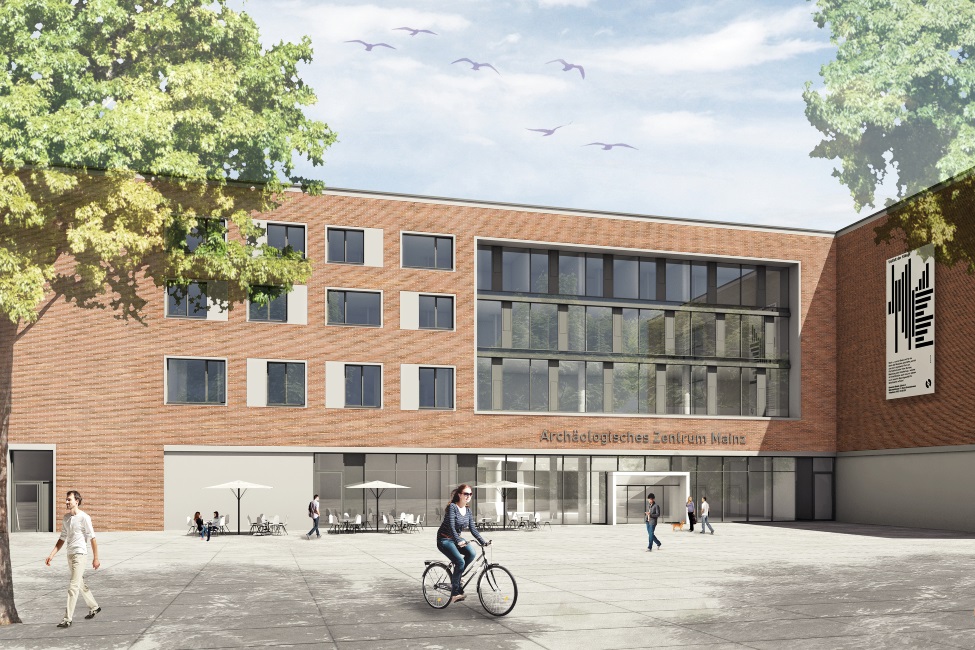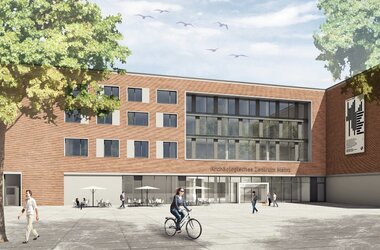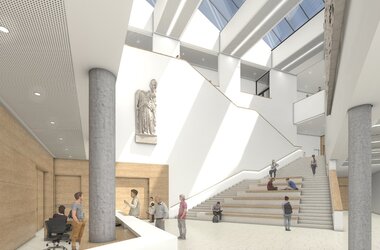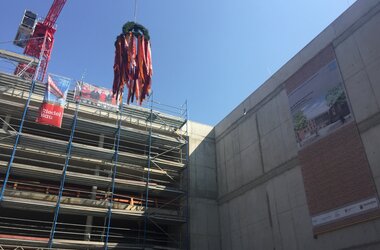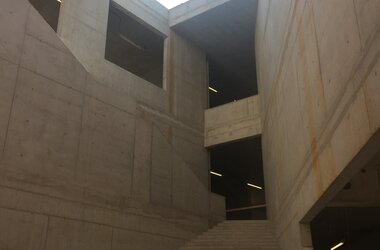Topping-out ceremony at the Mainz Archaeological Center
Topping-out ceremony in Mainz on 17 August 2018: The reinforced concrete body of the Roman-Germanic Central Museum, also called RGZM, whose foundation stone was laid in May 2017 has now been completed. The Landesbetrieb Liegenschafts- und Baubetreuung, the (State) Estate and Construction Management Agency, was the Principal in the 51-million-euro project.
Topping-out ceremony in Mainz on 17 August 2018: The reinforced concrete body of the Roman-Germanic Central Museum, also called RGZM, whose foundation stone was laid in May 2017 has now been completed. The Landesbetrieb Liegenschafts- und Baubetreuung, the (State) Estate and Construction Management Agency, was the Principal in the 51-million-euro project.
The archaeological center finds its new location in the southern part of the Altstadt [historical town center], next to the Roman ship museum and has 10.000 m² of usable space in an L-shaped building, thereby creating a border of sorts for the new Archaeological Plaza.
The building interior can be seen from the outside as well. The facade is brick surfaced, following the ancient Roman style, and large round pillars contribute to its antique appearance.
The Darmstadt architects Bernhardt + Partner designed the building project. The Mainz location of KREBS +KIEFER did all the building inspections and construction supervision.
The RGZM is one of the eight Leibniz Research Museums in Germany. Their distinguishing properties are that, on the one hand the museum is able to communicate knowledge, and on the other hand this institution also does research. The facility is divided into the research institute and an exhibition wing. The exhibition extends over three floors and takes up 3000 m².
The official handover of the LBB to the RGZM is planned after building completion, which is projected to be in 2020. The researchers will then be able to leave their older facility on the castle premises and begin working in the new, modern workshops and laboratories. The research library will be the heart of the new building.
The museum will be accessible to the public as soon as 2021.
